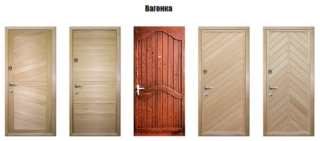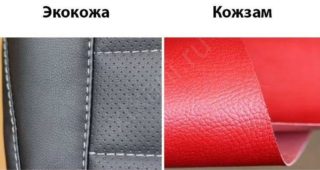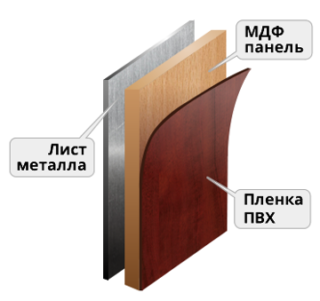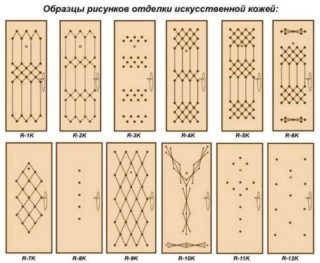The front door protects the house from outside intrusion and cold, so it must be strong and reliable. Do not forget about the decorative design, which creates the first impression of the owner of the home.
- Assortment of finishing materials for finishing the front door
- Vinylleather
- Lining
- Artificial leather
- Leatherette
- PVC foil
- MDF panels
- Required tools and materials
- Preparatory work
- The process of upholstering the front door with your own hands outside and inside
- Installation of lining on a wooden door
- Steel door
- Installation of leatherette on a wooden door
- How to sheathe a metal door with leatherette
Assortment of finishing materials for finishing the front door
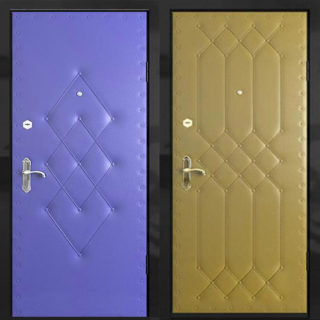
Upholstery will help to change an outdated look or give style and personality to a new door. The exterior design also has a practical function, it increases heat and sound insulation. When choosing a material, its placement is taken into account. The outside finishing of the entrance door must be resistant to external factors (frost, moisture, temperature fluctuations, mechanical damage). Internal cladding is carried out in the same style as the interior of the hallway.
Vinylleather
The material is made from polymers, most often from polyvinyl chloride. It is used in the manufacture of furniture, clothing, as upholstery of the door leaf. Vinyl leather is UV, low temperature, abrasion and moisture resistant. Soft leatherette successfully imitates its natural counterpart, but costs much less. When choosing an iron door finish, many buyers stop at this option. Vinyl leather attracts with a variety of shades and textures, ease of care and durability.
Lining
Artificial leather
Leatherette
A variety of artificial leather based on cotton coated with nitrocellulose appeared in the 30s of the XX century. Inexpensive material has become popular due to its spectacular appearance. Modern technologies make it possible to create products that are outwardly indistinguishable from genuine leather. The advantages include wear resistance, vapor permeability, the ability to repel moisture. Leatherette is offered in a wide range of textures and colors, it will easily fit into any interior. The material is easily damaged by sharp objects, in which case the upholstery will have to be changed.
Genuine leather for upholstery is rarely used and is a luxury item. The leather is visually attractive, pleasant to the touch, strong and durable. Manufacturers offer material with a smooth and embossed texture, a wide selection of colors.Among the disadvantages of the option, it is worth noting the high cost, sensitivity to temperature changes and sunlight.
PVC foil
MDF panels
Chipboards with a natural veneer or laminate outer layer have an aesthetic appearance and a long service life. A variety of colors and options for imitating different types of wood allows you to find the optimal coating for every taste. The material is safe, does not rot, does not swell from moisture. MDF panels are a practical finish for a metal door, they serve as an additional barrier against heat loss.
Required tools and materials
You can sheathe the door with your own hands, without spending money on paying for the work of specialists. Depending on the chosen finishing material, a certain set of tools will be required.
For upholstery with clapboard you need:
- tape measure and pencil;
- level;
- hacksaw or jigsaw;
- sandpaper;
- screwdriver or hammer;
- nails or screws;
- brush;
- varnish.
To properly sheathe an iron door, you will have to assemble a frame; they buy wooden blocks for it.
For upholstery with leatherette you will need:
- construction knife or scissors;
- roulette;
- stapler;
- a hammer;
- brush;
- polymer glue;
- construction and decorative nails;
- insulation.
When preparing the canvas for finishing, it is necessary to degrease it with white spirit or turpentine. For restoration, you may need a sealant and metal corners.
Preparatory work
Before sheathing the entrance doors, they must be removed from their hinges. This will simplify the installation of finishes and provide a high-quality result. Preparation is carried out in several stages:
- The lock, handle and peephole are dismantled from the canvas.
- The old casing is removed.
- The revision of the sealing rubber is carried out, the worn-out strips are replaced.
- Visible defects are covered with putty or sealant, the wooden canvas can be pulled together by stuffing metal corners.
- The door is cleaned of dirt, the iron sheet is degreased with white spirit, wood with turpentine.
If lining is used as a cladding, the material is brought into the room per day so that after installation the elements do not deform.
The process of upholstering the front door with your own hands outside and inside
Features of the installation of the finish depend on the material of the canvas. Wood is easier to work with, but often a metal door is installed at the entrance. Knowing the plating technology, you can cope with the work yourself.
Installation of lining on a wooden door
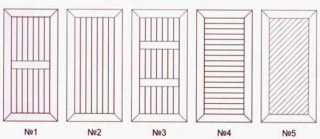
Choosing how to decorate a wooden door from the inside of your apartment, take into account its combination with the decor of the corridor. At the finishing stage, you can additionally insulate the canvas. One of the universal options is a wooden lining. Due to its special texture, the material looks respectable and creates a cozy atmosphere. Before starting work, the master needs to choose how the planks will be located - horizontally or vertically.
Step-by-step instruction:
- Measure the door leaf, then mark the panels and saw off the parts of the required length.
- Sand the ends of the planks with sandpaper.
- Installation starts from the bottom edge of the door. The first plank is laid with special care, the whole structure depends on it. The location is verified by the building level. Fastening is carried out with self-tapping screws or finishing nails.
- Subsequent elements are interconnected by a groove-ridge locking system. They are attached to a wooden canvas with nails.
- The final stage is the opening of the surface with varnish, which will give shine and serve as protection from moisture.
Installation of the removed parts and installation of the door in the opening is carried out after the varnish layer has dried.
Steel door

Fixing wood planks to metal is much more difficult than fixing wood. When facing such a canvas, the frame construction technique is used.
- After preparatory work, the canvas is measured.
- Bars of the required length are sawn off to size. Holes are drilled in them along the diameter of the screws.
- The workpieces are applied to the metal surface for marking.
- Holes for fasteners are drilled in the right places and the frame is fixed on the door. During installation, you can perform insulation by placing foam rubber, isolon or batting between the casing and the canvas. The materials are glued to the iron.
- The lining is stuffed onto slats in accordance with the selected pattern. The finished finish is opened with varnish.
Installation of the cladding is carried out equally from the inside and outside, the insulation is placed on one side.
Installation of leatherette on a wooden door
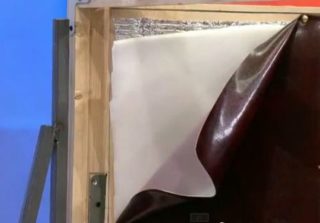
Another common finishing method is to cover the canvas with faux leather. In addition to the upholstery fabric, insulation is required. Several varieties are used:
- foam rubber;
- batting;
- felt;
- isolone.
To protect against drafts along the perimeter of the door, a roller is nailed made of insulation, covered with leatherette. Sections of leatherette 10-15 cm wide will be required, the stuffing is made from rolled-up remnants of heat-insulating material or special bundles are bought. From the outside of the door, the rollers are attached to the casing, from the inside to the door frame.
Sequence of work:
- Measure the door and cut off the leatherette with a 15 cm allowance on each side.
- From scraps of leatherette and insulation, 4 rollers are rolled up - 2 for the top and bottom, 2 for the sides of the handle and loops. The strips are nailed so that there is a protruding edge of 3 cm.
- Insulation is placed between the rollers, the material is fixed with a stapler.
- The leatherette is mounted from above, from the folds of the edges inward, the upholstery should partially go over the rollers.
- The canvas is stretched and fixed with decorative nails, starting from the upper corners, then along the perimeter. The step of fastening is 5-10 cm. Cut the necessary holes: for a lock, a handle, a peephole.
You can trim artificial leather with decorative nails. They come in silver and gold or are covered with leatherette to match the trim. Also, decorative braid or fishing line is required to secure the pattern.
How to sheathe a metal door with leatherette
- Leatherette and insulation are cut to fit the size of the door.
- The heat-insulating material is fixed with polymer glue.
- On the insulation, the layout of the location of the buttons is performed.
- Leatherette is laid on top, onto which the made markings are transferred.
- The ends of the door are well coated with glue, the upholstery is attached to them. The fixation starts from the top edge, the material stretches well. There should be no folds or distortions.
- After the glue dries, the fittings are sewn on and the holes for the lock and handle are cut out. Insulating rollers are glued over the upholstery.
It is not necessary to sheathe a door with a textured pattern, a smoothly stretched leatherette looks stylish and attractive.
Decorating an entrance door is a creative process that requires accuracy and adherence to technology. High-quality hand-made work will become a source of pride for many years.

